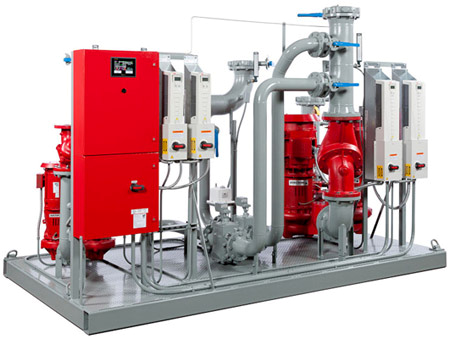In this article I will discuss the fundamentals of energy efficiency and "where to begin". I have been blessed, truly blessed, to have a role where I literally travel the United States and Canada meeting with companies around their need to reduce energy consumption. The consistent theme seems to be inconsistency. Now stop and think about what I just said there. The industry, in regards to Energy Efficiency is fragmented.
On one side you have the energy managers, hard working folks who genuinely are trying to make a difference but who are in an industry overwhelming them with quick fix solutions that do not offer a much needed strategy and approach.
On the other end of the spectrum you have the dealers, companies providing solutions that are guaranteed to do x,y,z.
Now don't get me wrong, my intent is not to be sarcastic. Most of these offerings work, and work quite well I might add. The dilemma is that these offerings only fill part of a great need.
Finally, we have everyone between these two roles, the COO, the constituent, the tenant, and so on. Each with their own specific wants and needs. If you really stop to think about everyone involved in the energy efficiency sphere it can be overwhelming. Heck for me sitting it's almost enough to make me want to stop writing when I realize how many directions this article could branch off into.
The Framework
Like anything, if we are going to define a holistic strategy then we need a framework. A lot of people come to me and want quick fixes, what can I do to meet my 20% energy spend reduction, give me three steps I can do now to lower my utility usage, ect. ect. Here is the problem with that thinking, one if you simple focus on utility spend reduction you miss the impacts this has upon the rest of your "ecosystem".
I can give you a quick answer but I will be doing you a disservice, truly I will be leading you into fixing one thing but potentially breaking others. Ok, if your like me at this point your screaming for some resemblance of strategy.
Framework n.
/ˈfrāmˌwərk
1. a structural plan or basis of a project
2. a structure or frame supporting or containing something
So a framework is a structural plan or basis of a project. Well in this case our project or focus point is energy efficiency lets break this out further.
Step 1: Why am I doing this?
Ever have someone tell you the why is more important then the how? It's an annoying little question but if you think about it, it actually has merit. If your company came to you and said we need to reduce utility usage so that we can produce more units of x at a lower cost then the why has immediate impact. In this case you probably would not want to reduce utility spend by shutting down your manufacturing line, but you could procure equipment and process elements that are inherently more efficient.
See it's not black and white, the why truly defines the how. So first off understand Why am I doing this.
Step 2: Who am I doing this for?
If a local city official came to you and said "we need to reduce our carbon footprint" and then an hour later a manufacturing executive said the same thing are you doing this for the same person? Are you truly doing the same thing? On the surface my mind screams of course I am! I am being asked to reduce carbon footprint so I will:
1. Encourage Mass Transit or Biking
2. Look at my supply chain to ensure optimal supply routing
3. Look at my processes and time them with my rate structure and potentially stage equipment more efficiently.
Here's the catch... in my 3 solution action plan did I stop to think about who was asking me for this and why they may want it done?
Let's dissect this, on one hand we have the city official. Why might he/she be asking me to reduce their carbon footprint. Maybe the State or Federal government has a compliance target, maybe the official is on the West Coast where their constituents are very eco savvy, maybe the official simple wants to better the environment.
Now flip it to the manufacturer, maybe this person wants to meet compliance, maybe they want to reduce utility spend and are confusing it with carbon footprint, maybe this executive has been given a target and has no clue what it means or why he or she should care.
Hopefully you are seeing the danger of creating an action plan without understanding the holistic strategy.
Step 3: Know thy business
Commercial buildings consume 46% of the United States utilities the majority of which is electricity. I can go to a commercial office building and reduce their utility spend by almost 95% instantly. I will simply go to their main incoming feed and turn off the power to the entire building. Now to most of you (hopefully all of you) this seems like a really bad idea...
But then how many times have you met with someone who said something like this... "Our strategy is to raise our setpoints to 78 degrees during the summer and 66 degrees during the winter, we also will load shed when the utility lets us know there is an incentive for feeding power back"
When I hear this I think to myself great, that may work in a corporate office, but try that in Real Estate, or in a University and watch your constituents move to another location. See the problem is that strategies aren't a one size fits all solution and that in itself is what makes this field a nightmare but also a creative delight at the same time.
Conclusion
We covered the fundamental questions, and hopefully we've created some questions also. I didn't know how long this article/series would be until I started writing it but now I figure I have about 3 more articles to go to wrap this one up. In the next article we will begin to lay out the three-step framework of energy management:
- Identify
- Evaluate
- Realize
Beginning with "Identify", we will layout our key stakeholders, how to create a fundamental data collection platform, and how to create, communicate, and engage around a business process.
What are your thoughts so far? Do you see the same challenges in your business?
Let me know in the comments below!







